Overview
Charles D. Hornig of Elizabeth, NJ, at the age of seventeen, founded the magazine, from the beginning seeking to secure the most prestigious weird and science fiction authors he could. Hornig had been buying and reading science fiction regularly since the Sept 1930 issues of Amazing Stories and Wonder Stories . In Jan 1933 he decided to publish a fanzine and contacted Conrad H. Ruppert, who was then producing on letterpress with handset type the fan magazine The Science Fic-Digest. The first issue of Hornig's magazine The Fantasy Fan appeared July 29, 1933. Horning sent a complimentary copy to Hugo Gernsback, publisher of Wonder Stories . Gernsback had just fired his editor David Lasser for spending more time promoting The Workers Alliance and organizing the unemployed than on his editorial work. Gernsback felt a much better job could be done assisting the unemployed if Lasser himself was unemployed and could therefore devote full-time to it. Gernsback was impressed by the professional look and content of Hornig's first issue of The Fantasy Fan; he telegraphed Hornig to come and see him. He had been paying Lasser $75 a week. Due to Hornig's youth, Gernsback hired him at $20 a week and Hornig reported for work Aug 7, 1933. The first issue of Gernsback's Wonder Stories pulp magazine that he produced was Nov 1933, with the help of veteran associate editor C.P. Mason. This gave Hornig the resources to continue The Fantasy Fan which would have been economically difficult otherwise. Hornig stayed with Wonder Stories until 1936.
The Fantasy Fan was considered one of the premier sources of weird and fantasy literature during its short duration, regardless of it being an amateur production. [1] While maintaining a small circulation - its print run probably never exceeded 300 copies, and it had only sixty subscribers - it represented a mixture of news, articles, stories, poems, and miscellany connected to weird fiction. [2] [3] Included within The Fantasy Fan was a column entitled 'The Boiling Point' which devolved to acrimonious letter exchanges between several of the magazine's regular contributors, including H.P. Lovecraft, Forrest J. Ackerman and Clark Ashton Smith; though this column was terminated with the February 1934 issue. [3] Necronomicon Press issued The Boiling Point in book form in the 1980s.
First publication of several works by noteworthy authors occurred in The Fantasy Fan, including works by Lovecraft, Smith, Robert E. Howard, August Derleth, and Robert Bloch. Perhaps one of the magazine's greatest achievements, though, was the serialization of the revised version of Lovecraft's Supernatural Horror in Literature (October 1933-February 1935); the serialization proceeded until it had reached the middle of Chapter VIII and the magazine folded. The Fantasy Fan also saw the first publication of Lovecraft's stories: "The Other Gods" (November 1933) and "From Beyond" (June 1934) as well as reprints (from amateur papers) of "Polaris" (February 1934) and "Beyond the Wall of Sleep" (October 1934); it also published the poems "The Book" (October 1934), "Pursuit" (October 1934), "The Key" (January 1935), and "Homecoming" (January 1935) from Lovecraft's sonnet cycle Fungi from Yuggoth. Lovecraft was represented in no less than seventeen of the eighteen issues published. The October 1934 issue was dedicated to Lovecraft. [3]
The two following issues, November 1934 and December 1934, were tributes to Clark Ashton Smith and Edgar Allan Poe respectively.
The March 1934 issue is remarkable for the first publication of Robert E. Howard's previously rejected (by Weird Tales editor Farnsworth Wright) Conan story, "The Frost King's Daughter". Hornig changed the title to "Gods of the North", and the main character was called "Amra", a Conan nickname which would have been recognized by fans at the time.
The July 1934 and September 1934 issues included a cycle of weird verse octets under the title "Dreams of Yith" by Duane W. Rimel. The cycle was revised by H.P. Lovecraft and perhaps by Clark Ashton Smith.
Hornig experimented with covers for three consecutive issues (September, October, and November 1934), but explained in the December 1934 issue that he was forced to abandon them due to increased printing costs. Issue thirteen (September 1934) would be billed as the First Anniversary Issue.
Distribution of The Fantasy Fan was so small Hornig would sometimes hand write notations on each individual copy, such as upcoming previews (September 1933) or a missed back issue number that was available (December 1934).
In the August 1934 issue, Hornig gratefully acknowledges that the September 1934 issue of Weird Tales contains a plug for The Fantasy Fan by editor Farnsworth Wright, and he expresses hope that such exposure will increase his circulation. Unfortunately the fanzine would still fold six issues later, and today original copies of The Fantasy Fan are considered very rare amongst collectors. Having been printed on thin and cheap paper, it is commonplace for any issue to show signs of deterioration (such as edge browning on pages).
The Fantasy Fan was assisted by the generosity of its contributing authors. who included Robert E. Howard, David H. Keller, J. Harvey Haggard, Eando Binder, and a number of Lovecraft's correspondents including August Derleth, R.H. Barlow, William Lumley, F.Lee Baldwin, Duane Rimel, Emil Petaja and Robert Bloch. Bloch had only one piece in the zine, "The Laughter of a Young Ghoul", in Issue 16 (Dec 1934).
With the final issue (February 1935), Hornig notes that a favorable arrangement he had with a printer could no longer be maintained, and he had already lost a couple of hundred dollars during the fanzine's run. He also relates that the first issue (September 1933), published just a year-and-a-half earlier, was already commanding prices five to ten times its 0.10 cents cover price.
After the demise of The Fantasy Fan, numerous attempts were made to revive or succeed it. In the spring of 1935 William L. Crawford contemplated reviving the defunct magazine with Lovecraft as editor, but the plan never materialised. No magazine truly filled its place as a news organ, a forum for the expression of fan's views, and a venue for work by distinguished writers in the field. [3]
In 1940, Hornig used the pen names of Derwin Lesser and Homer Porter to author stories for Superworld Comics, which folded after only 3 issues. The publisher again was Hugo Gernsback (Kosmos Publications), who was familiar with Hornig from his prior employment and also of course, The Fantasy Fan.
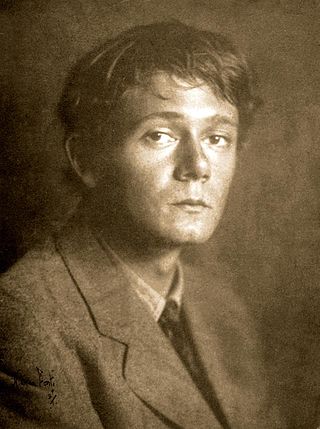
Clark Ashton Smith was an influential American writer of fantasy, horror, and science fiction stories and poetry, and an artist. He achieved early recognition in California for traditional verse in the vein of Swinburne. As a poet, Smith is grouped with the West Coast Romantics alongside Joaquin Miller, Sterling, and Nora May French and remembered as "The Last of the Great Romantics" and "The Bard of Auburn". Smith's work was praised by his contemporaries. H. P. Lovecraft stated that "in sheer daemonic strangeness and fertility of conception, Clark Ashton Smith is perhaps unexcelled", and Ray Bradbury said that Smith "filled my mind with incredible worlds, impossibly beautiful cities, and still more fantastic creatures". Additional writers influenced by Smith include Leigh Brackett, Harlan Ellison, Stephen King, Fritz Lieber, George R. R. Martin, and Donald Sidney-Fryer.
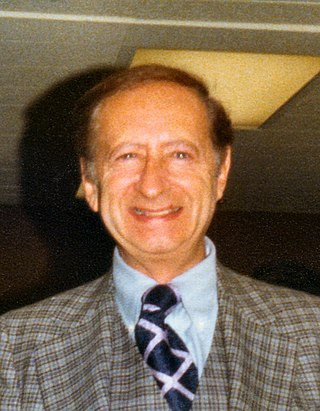
Robert Albert Bloch was an American fiction writer, primarily of crime, psychological horror and fantasy, much of which has been dramatized for radio, cinema and television. He also wrote a relatively small amount of science fiction. His writing career lasted 60 years, including more than 30 years in television and film. He began his professional writing career immediately after graduation from high school, aged 17. Best known as the writer of Psycho (1959), the basis for the film of the same name by Alfred Hitchcock, Bloch wrote hundreds of short stories and over 30 novels. He was a protégé of H. P. Lovecraft, who was the first to seriously encourage his talent. However, while he started emulating Lovecraft and his brand of cosmic horror, he later specialized in crime and horror stories working with a more psychological approach.
Arkham House was an American publishing house specializing in weird fiction. It was founded in Sauk City, Wisconsin, in 1939 by August Derleth and Donald Wandrei to publish hardcover collections of H. P. Lovecraft's best works, which had previously been published only in pulp magazines. The company's name is derived from Lovecraft's fictional New England city, Arkham, Massachusetts. Arkham House editions are noted for the quality of their printing and binding. The printer's mark for Arkham House was designed by Frank Utpatel.

Weird Tales is an American fantasy and horror fiction pulp magazine founded by J. C. Henneberger and J. M. Lansinger in late 1922. The first issue, dated March 1923, appeared on newsstands February 18. The first editor, Edwin Baird, printed early work by H. P. Lovecraft, Seabury Quinn, and Clark Ashton Smith, all of whom went on to be popular writers, but within a year, the magazine was in financial trouble. Henneberger sold his interest in the publisher, Rural Publishing Corporation, to Lansinger, and refinanced Weird Tales, with Farnsworth Wright as the new editor. The first issue to list Wright as editor was dated November 1924. The magazine was more successful under Wright, and despite occasional financial setbacks, it prospered over the next 15 years. Under Wright's control, the magazine lived up to its subtitle, "The Unique Magazine", and published a wide range of unusual fiction.

Wonder Stories was an early American science fiction magazine which was published under several titles from 1929 to 1955. It was founded by Hugo Gernsback in 1929 after he had lost control of his first science fiction magazine, Amazing Stories, when his media company Experimenter Publishing went bankrupt. Within a few months of the bankruptcy, Gernsback launched three new magazines: Air Wonder Stories, Science Wonder Stories, and Science Wonder Quarterly.
Whispers was one of the new horror and fantasy fiction magazines of the 1970s.

Donald Albert Wandrei was an American science fiction, fantasy and weird fiction writer, poet and editor. He was the older brother of science fiction writer and artist Howard Wandrei. He had fourteen stories in Weird Tales, another sixteen in Astounding Stories, plus a few in other magazines including Esquire. Wandrei was the co-founder of the prestigious fantasy/horror publishing house Arkham House.
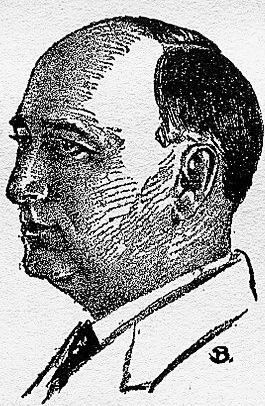
David Henry Keller was an American writer who worked for pulp magazines in the mid-twentieth century, in the science fiction, fantasy, and horror genres. He was also a psychiatrist and physician to shell-shocked soldiers during World War I and World War II, and his experience treating mentally ill people is evident in some of his writing, which contains references to mental disorders. He initially wrote short stories as a hobby and published his first science fiction story in Amazing Stories in 1928. He continued to work as a psychiatrist while publishing over sixty short stories in science fiction and horror genres. Technically, his stories were not well-written, but focused on the emotional aspects of imaginative situations, which was unusual for stories at the time.
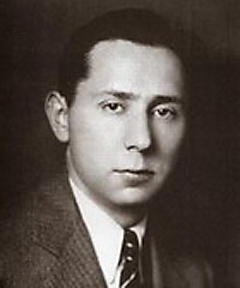
David Lasser was an American writer and political activist. Lasser is remembered as an influential figure of early science fiction writing, working closely with Hugo Gernsback. He was also heavily involved in the workers’ rights struggles of the Great Depression.
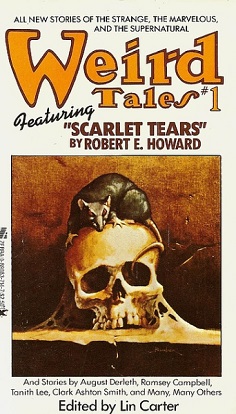
Weird Tales was a series of paperback anthologies, a revival of the classic fantasy and horror magazine of the same title, published by Zebra Books from 1980 to 1983 under the editorship of Lin Carter. It was issued more or less annually, though the first two volumes were issued simultaneously and there was a year’s gap between the third and fourth. It was preceded and succeeded by versions of the title in standard magazine form.
William Levi Crawford was an American publisher and editor.

Scoops was a weekly British science fiction magazine published by Pearson's in tabloid format in 1934, edited by Haydn Dimmock. Scoops was launched as a boy's paper, and it was not until several issues had appeared that Dimmock discovered there was an adult audience for science fiction. Circulation was poor, and Dimmock attempted to change the magazine's focus to more mature material. He reprinted Arthur Conan Doyle's The Poison Belt, improved the cover art, and obtained fiction from British science fiction writers such as John Russell Fearn and Maurice Hugi, but to no avail. Pearson's cancelled the magazine because of poor sales; the twentieth issue, dated 23 June 1934, was the last. The failure of the magazine contributed to the belief that Britain could not support a science fiction magazine, and it was not until 1937, with Tales of Wonder, that another attempt was made.
Crypt of Cthulhu is an American fanzine devoted to the writings of H. P. Lovecraft and the Cthulhu Mythos. It was published as part of the Esoteric Order of Dagon amateur press association for a short time, and was formally established in 1981 by Robert M. Price, who edited it throughout its subsequent run.

Future Science Fiction and Science Fiction Stories were two American science fiction magazines that were published under various names between 1939 and 1943 and again from 1950 to 1960. Both publications were edited by Charles Hornig for the first few issues; Robert W. Lowndes took over in late 1941 and remained editor until the end. The initial launch of the magazines came as part of a boom in science fiction pulp magazine publishing at the end of the 1930s. In 1941 the two magazines were combined into one, titled Future Fiction combined with Science Fiction, but in 1943 wartime paper shortages ended the magazine's run, as Louis Silberkleit, the publisher, decided to focus his resources on his mystery and western magazine titles. In 1950, with the market improving again, Silberkleit relaunched Future Fiction, still in the pulp format. In the mid-1950s he also relaunched Science Fiction, this time under the title Science Fiction Stories. Silberkleit kept both magazines on very slim budgets throughout the 1950s. In 1960 both titles ceased publication when their distributor suddenly dropped all of Silberkleit's titles.
Charles Hornig was one of the earliest contributors to the science fiction genre. He not only created one of the first fanzines in 1933, as a teenager, he became the managing editor for Wonder Stories magazine from November, 1933 to April, 1936.

Scientific Detective Monthly was a pulp magazine that published fifteen issues beginning in January 1930. It was launched by Hugo Gernsback as part of his second venture into science-fiction magazine publishing, and was intended to focus on detective and mystery stories with a scientific element. Many of the stories involved contemporary science without any imaginative elements—for example, a story in the first issue turned on the use of a bolometer to detect a black girl blushing—but there were also one or two science fiction stories in every issue.

Science-fiction and fantasy magazines began to be published in the United States in the 1920s. Stories with science-fiction themes had been appearing for decades in pulp magazines such as Argosy, but there were no magazines that specialized in a single genre until 1915, when Street & Smith, one of the major pulp publishers, brought out Detective Story Magazine. The first magazine to focus solely on fantasy and horror was Weird Tales, which was launched in 1923, and established itself as the leading weird fiction magazine over the next two decades; writers such as H.P. Lovecraft, Clark Ashton Smith and Robert E. Howard became regular contributors. In 1926 Weird Tales was joined by Amazing Stories, published by Hugo Gernsback; Amazing printed only science fiction, and no fantasy. Gernsback included a letter column in Amazing Stories, and this led to the creation of organized science-fiction fandom, as fans contacted each other using the addresses published with the letters. Gernsback wanted the fiction he printed to be scientifically accurate, and educational, as well as entertaining, but found it difficult to obtain stories that met his goals; he printed "The Moon Pool" by Abraham Merritt in 1927, despite it being completely unscientific. Gernsback lost control of Amazing Stories in 1929, but quickly started several new magazines. Wonder Stories, one of Gernsback's titles, was edited by David Lasser, who worked to improve the quality of the fiction he received. Another early competitor was Astounding Stories of Super-Science, which appeared in 1930, edited by Harry Bates, but Bates printed only the most basic adventure stories with minimal scientific content, and little of the material from his era is now remembered.

Fanciful Tales of Time and Space was a semi-professional science fiction and fantasy magazine which published one issue in 1936. It was published by Donald A. Wollheim and Wilson Shepherd, two young science fiction fans; Wollheim was based in New York City, but the magazine was printed in Oakman, Alabama, where Shepherd had a letter press.

Duane Weldon Rimel was an American writer of speculative and erotic literature who is best known for his friendship with H. P. Lovecraft.

Marvel Tales and Unusual Stories were two related American semi-professional science fiction magazines published in 1934 and 1935 by William L. Crawford. Crawford was a science fiction fan who believed that the pulp magazines of the time were too limited in what they would publish. In 1933, he distributed a flyer announcing Unusual Stories, and declaring that no taboos would prevent him from publishing worthwhile fiction. The flyer included a page from P. Schuyler Miller's "The Titan", which Miller had been unable to sell to the professional magazines because of its sexual content. A partial issue of Unusual Stories was distributed in early 1934, but Crawford then launched a new title, Marvel Tales, in May 1934. A total of five issues of Marvel Tales and three of Unusual Stories appeared over the next two years.















